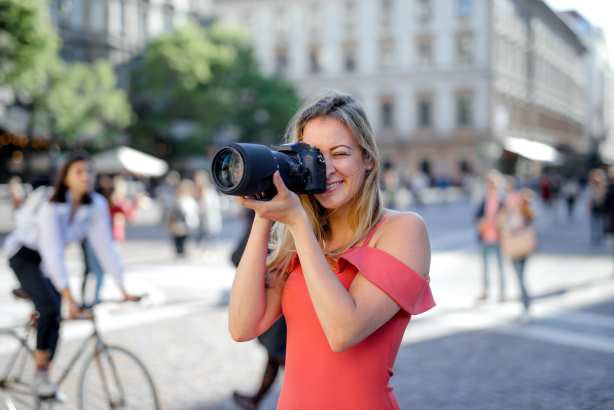If you’re a person citing this article, then you shall primarily know that film cameras are all but extinct. Digital cameras have become the go-to of the most to least professional photographers, along with the security offices in order to use it as a hidden camera. However, the reason is quite simple: the control. Digital gives you a control and a sense of adaptability that film cameras never did.
However, you are here wanting to learn about the basic and most subtle techniques to get going on your journey of digital photography.
Which Digital Camera You Should Buy?
With so many options of cameras being available, choosing the best one is not an easy task. However you can choose from the three basic types:
POINT-and-SHOOTS:
These are portable and cheap digital cameras in the market. Since these have very few features,these cameras are a blessing in disguise for a beginner since it takes away the worry of changing lenses, of doing better shutter speeds or using tripods to avoid degrading your photos. When you start taking snaps with a device providing you bare minimum, you invest your best skills in it.
DSLRs:
If you’re a beginner, but have a confidence of dealing with multiple ranges of modes and features only then think about getting one for yourself. As it presents more features, it’s also pricier which can be a drawback for a beginner or hobbyist.
SMARTPHONE:
The camera you have is the best camera. Of course you won’t be getting a lot of features but you also already have it, which means you initial investment is $0.00

Image credit: Andrea Piacquadio (Source: Pexels.com)
Understanding Digital Camera Features
In order to understand your camera, you just really have to get grip on its very main features.
MEGAPIXELS vs. SENSOR SIZE:
There’s a lot of megapixel myth that goes around the market making everyone believe the more MPs the better. Quite literally, mega pixels is only the amount of information that your camera captures. The real deal setter is the sensor. Larger the sensor, clearer the resulting image. So you just really need to focus on sensor size.
OPTICAL vs. DIGITAL ZOOM:
When you’re looking at lenses or cameras, you’ll see two kinds of zoom listed: optical and digital zoom. Optical gives you the clearest pictures when zoomed in while digital zoom will reduce the quality when applied. Always go for the optical zoom if you’re willing to spend more money.
RAW CAPABILITY:
When you shoot something always save pictures in RAW format instead of JPEG. This takes a lot of space but it also gives you the most options while editing your pictures later.
Basic Digital Camera Modes to Know?
AUTO:
Auto mode is simple to use. You click on it, your camera will tweak all the necessary settings for you. If you need a photo very fast, you use this mode. But when you’re learning, try different modes specifically with what you want because that makes you compatible.
SHUTTER PRIORITY:
The ‘S’ or ‘Tv’ mode lets you change the shutter speed. A faster shutter (denoted by a small number :1/160) will let you capture subjects moving very quickly. A slower speed gets you more light and detail for stationary objects.
ISO and White Balance
The first step of really taking control of your photography is Understanding ISO and White balance.
ISO is best thought as the camera’s sensitivity to light. Higher the ISO, the more sensitive. In very bright settings you might get images blown out if the ISO is too high. Conversely, an ISO that’s too low for dim settings won’t register enough light.
Most cameras automatically adjust the white balance according to the types of light different shades of colors have. But if your camera doesn’t do that, you can make adjustments yourself. You can use features of self-timer, exposure compensation, and burst mode in order to invest your energy in figuring out the manual of your camera’s ISO and white balance.
Conclusion: some general tips!
A viewer can get a sense of whether the picture is taken by an amateur or professional. Amateurs don’t have a feel for composition. Always keep in mind that ‘The Rule Of Thirds’ does the most business. If you don’t know what it is, then you shall read more about this rule which most of the photographers apply.
If you think you’ll do bad to your ‘natural’ style of photgraphy by post processing, you might be wrong. The final processing can be made intentionally stylistic, still too subtle and not over-done but only if you understand the concept and just not jump to a conclusion that you are applying ‘filters’ on your snap.
Last but surely not the least, practice and more practice! It. Don’t wait to get the perfect gear. Photography is more Art and less material supply. If you’ve got The eye for it, nothing can hold you back from taking good pictures. The sooner you get off of the couch, the faster you’ll progress.
